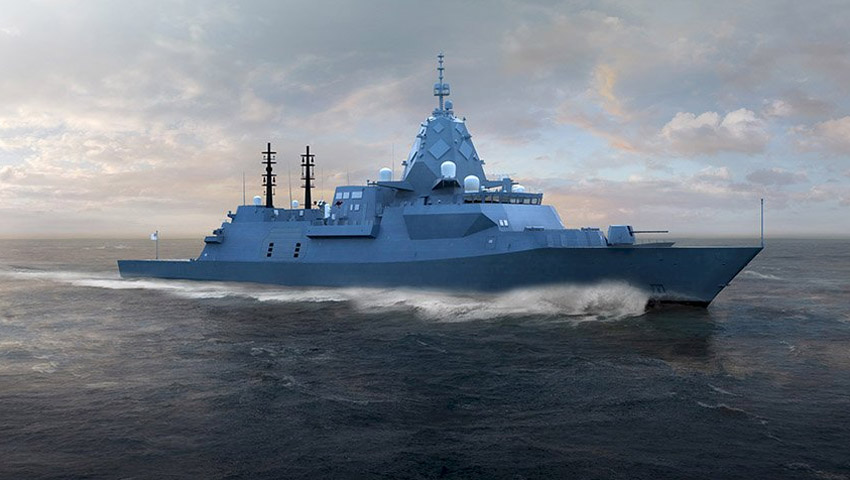A Western Australia-based firm has been tapped to develop a prototype for potential integration in the Royal Australian Navy’s future frigates.
Following an initial feasibility study in 2020, BAE Systems Maritime Australia (BAESMA) has awarded a $180,000 contract to marine technology company VEEM, which has been tasked with developing a prototype propeller blade for the Royal Australian Navy’s forthcoming Hunter Class frigates.
VEEM, based south-east of Perth at Canning Vale, will work alongside Kongsberg Maritime, which will continue to support the manufacture of the technology if the prototype demonstration is successful.
BAESMA is expected to issue a ‘request for proposal’ (RFP) for the propeller and brake blade over the coming months, with the final award announcement scheduled for 2022, before the steel cut on the first vessel at Osborne Naval Shipyard later that year.
This latest announcement comes just a month after VEEM secured $862,060 in funding from the Commonwealth government via round two of the Manufacturing Modernisation Fund.
“VEEM looks forward to working with BAE Systems Maritime Australia and Kongsberg Maritime on this pilot propeller blade and is very confident of being able to meet the exacting specification, having previously delivered blades to defence clients around the world,” VEEM managing director Mark Miocevich said.
“This will contribute significantly to maximising local sovereign industrial capability for the Hunter Class Frigate Program.
“As a long-term supplier of components for submarines, surface ships and warships to the Royal Australian Navy and having supplied more than $200 million worth of defence products since 1987, VEEM is committed to the supply of Australian-made propellers and brake blades.”
Minister for Defence Industry Melissa Price welcomed the announcement, which she said would support the Commonwealth government’s broader strategic objectives for the shipbuilding sector.
“This is an important project for the Hunter class frigates and a great opportunity for Australia’s defence industry as we continue to develop our local capability to support naval shipbuilding in Australia,” Minister Price said.
“We look forward to seeing more Australian industry participation in the Naval Shipbuilding Program, improving Australia’s defence manufacturing capability.”
In June 2018, the Commonwealth government announced BAE Systems Australia as the successful tender for the $35 billion SEA 5000 Future Frigate program.
The nine Hunter Class frigates will be based on the BAE Systems Type 26 Global Combat Ship currently under construction for the Royal Navy and will replace the eight Anzac Class frigates when they enter service beginning in the late 2020s.
The Hunter Class is billed as an anti-submarine warfare (ASW) centric vessel delivering an advanced ASW capability to the Royal Australian Navy at a time when 50 per cent of the world’s submarines will be operating in the Indo-Pacific region.
SEA 5000 is expected to support over 500 Australian businesses who have been pre-qualified to be part of the Hunter Class supply chain, with the Australian steel industry in particular benefiting from the 48,000 tonnes of steel required to build the ships.
[Related: BAE Systems Australia enters agreement with Lloyd’s Register for Hunter Class]









